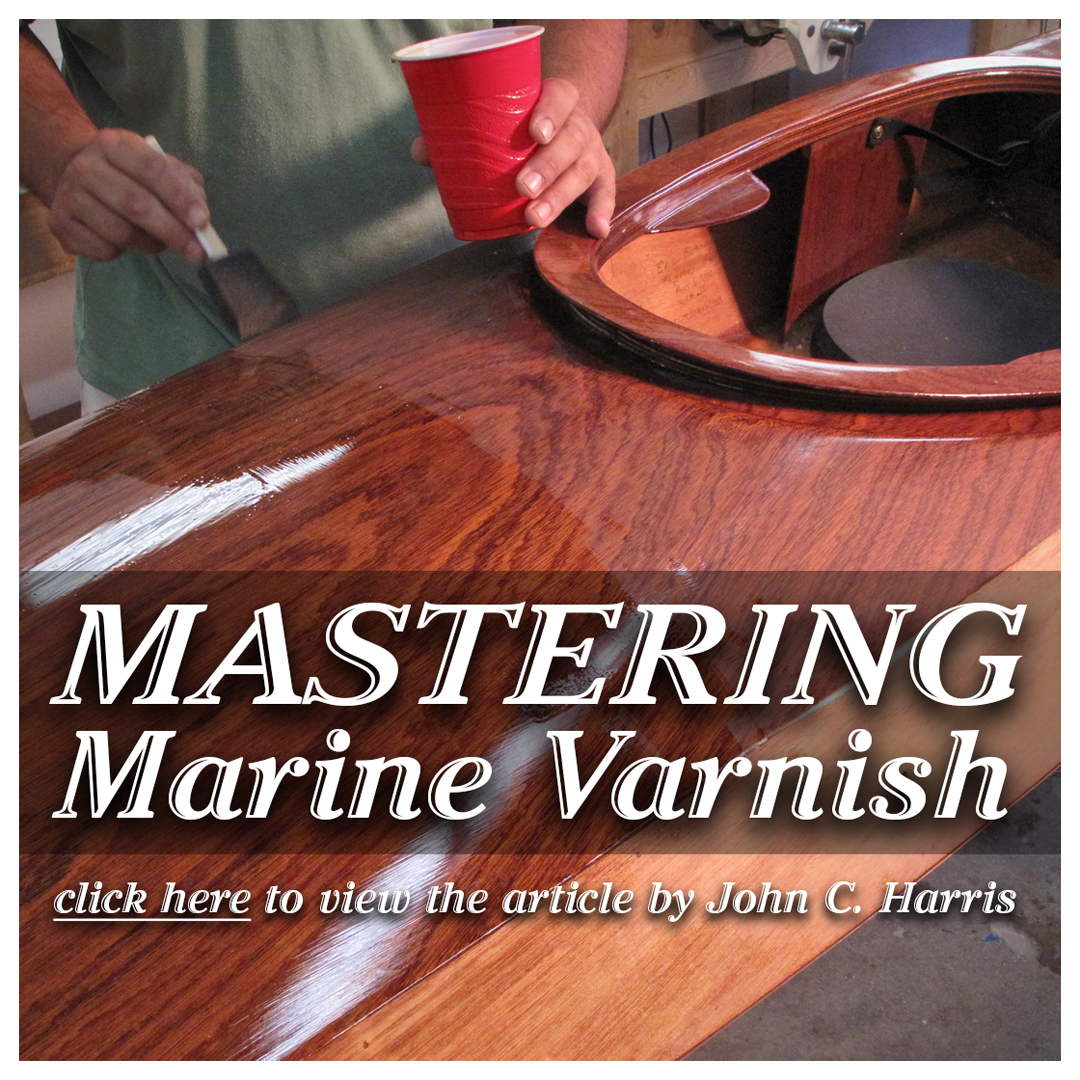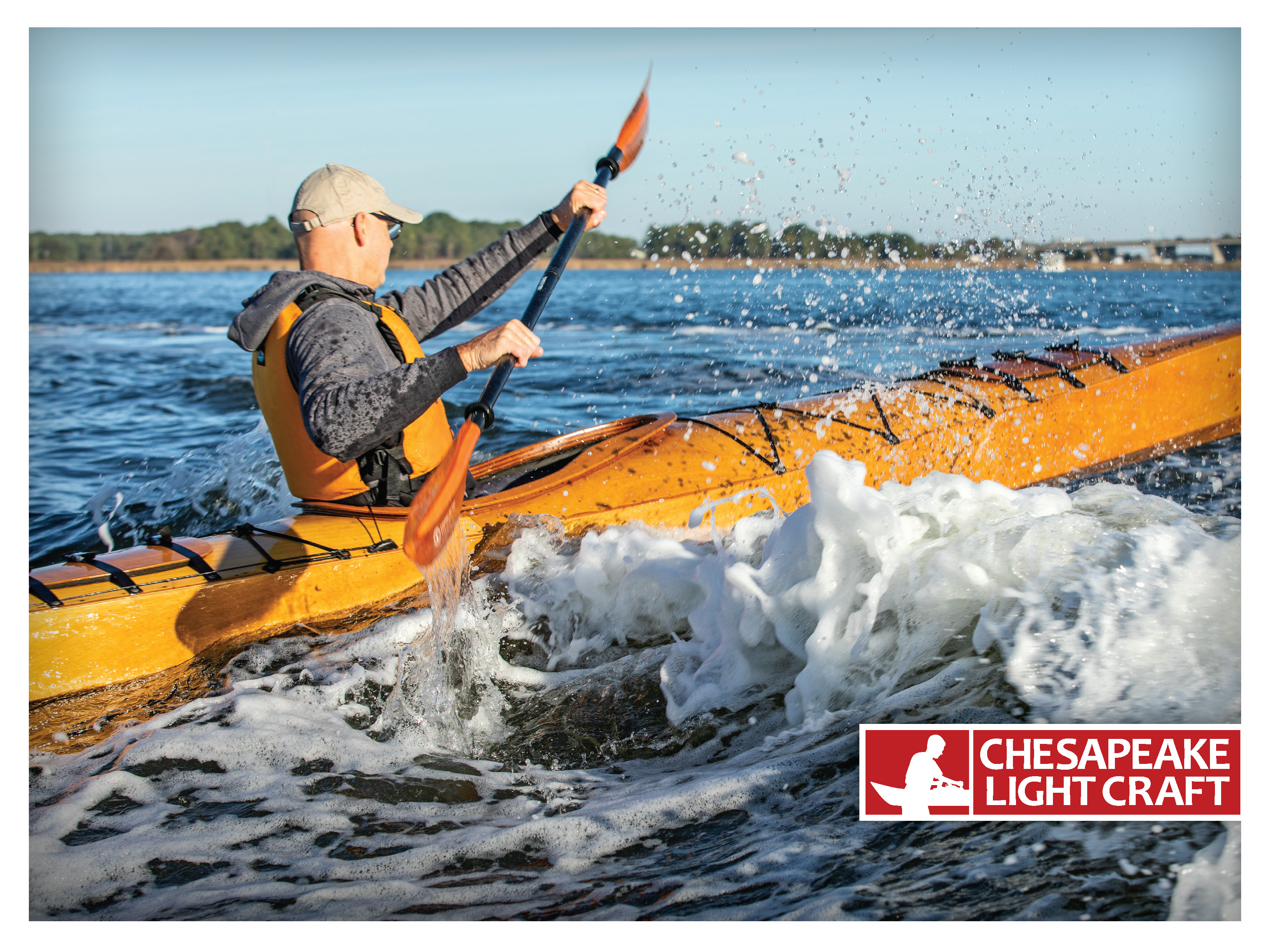Builders' Forum |
|
| ↓ Scroll to Last Comment ↓ | Forum Guidelines | Builders' Forum | |
Sealing shear clamp after noticing water seepage
I have been practicing self rescues using my Chesapeake 17 Lt. As a result my Kayak is ending up with water frequently up against the deck and shear from the inside of the Cockpit. I thought I had sealed all of my flaws with Epoxy, but this abnormal use may be testing that theory. When I was tacking the deck down I ended up with a few splits in my shear clamp. I sealed those splits with unthickened Epoxy, but it appears as though some water is penetrating the shear and possibly the deck around the nail heads. I want to use thickened Epoxy to seal up any possible water entry points, but at the same time I don't want to trap any moisture in the wood. For now I will stop using this Kayak for practicing rescues. I don't want to stop using the Kayak while I wait for the wood to to dry out completely. As much as I am tempted to seal all possible points of water entry prior to my next trip, in two days time. My gut tells me that would be a mistake if everything is not totally dry first. Any suggestions would be appreciated .
4 replies:
RE: Sealing shear clamp after noticing water seepage
fwiw...i would wait and let it dry out....and then address it.
epoxy and wet wood are a bad combination.
it would be great if you could attach a picture or two to show us a bit better what's happening.
that said, rolling will definitely show any flaws in failing to waterproof.
the shear clamp method when using nails is especially challenging becuase the nail makes a fresh hole (or crack) through wood that you may have precoated....opening it up again.
my approach would not be to attempt a fix with 'thickened' epoxy. thickened epoxy is not good for sealing.
i would be using unthickened on a bristle paint brush that is attached to a stick so i can get down to the ends and 'repaint' the shearclamps with the boat angled up on it s side/slightly upside down, such that the unthickened epoxy would natually flow into any cracks on the shear clamp or between the shear clamp and the deck or hull pieces.
i would make two passes of this technique (two coats) to ensure i got any holes dealt with properly with particular attention to where you can see you already have a problem.
all the best,
h
RE: Sealing shear clamp after noticing water seepage
Accepting that CLC’s C17Lt’s engineering is up to the stresses of its intended use, and that you’re confident your assembly was in line with their intentions, perhaps the repeated ‘rolling stresses’ imparted by self-rescue practice has revealed a weakness?
My take would be to allow your craft sufficient time to dry properly (probably not too long in the right environment with good air circulation) then a thorough attempt to seal the most likely areas that show water weeping with a urethane- or silane-type sealant that will adhere well to epoxy, seal any minor cracking, and bear up to flexure that may be happening in those areas that’s causing the leak paths.
RE: Sealing shear clamp after noticing water seepage
hi Sandy,
i usually don't jump back in when i disagree with other advice put out there becuase there is often more than one way to skin a cat (or build or solve a problem with a kayak).
that said, there is a certain phsyics to this and some of the suggestions i see as very problematic and have the possibility of making your situation worse.
these boat, are fundamentally wood core composites that you happen to be able to see through fibreglass/epoxy skins. the wood needs to be encapsulated with epoxy to stay dry....and if its getting wet, you need to solve it by repairing the epoxy....not with silocone (used in some cases for preventing a leak in an opening in an epoxy sealed hole (drill, fill, drill) like where the footbrace screws go through the deck or urethane or silane sealers (which are used for sealing wood decks and concrete floors).
youll note that CLC does not sell sealers (silane or urethane) which should be a clue that its not a boat-building material with respect to construction of hulls. silicone, like i mentioned has a place, but not for sealing raw wood.
if you look at clc shop tips https://www.clcboats.com/shoptips/epoxy_and_fiberglass/ they have some articles on repairs. and while your problem may not be a classic broken boat, you will notice there is no use of silicone or other sealers when there is any repair involving the failure/damage of the epoxy that leads to the wood being exposed. you fix it with epoxy.
anyway, if you are having trouble choosing between different advice like this, just give CLC a call. they are the undisputed experts.
all the best,
h













RE: Sealing shear clamp after noticing water seepage
» Submitted by Mark N - Sun, 8/11/19 » 4:02 PM
Hey Sandy, I'd like to start by commending you on practicing self rescues. So very few kayakers do that. Maybe it is the surfski influence, but if you can't self rescue, you should not be paddling that boat in those conditions.
As for the water intrusion, I would not be overly concerned if you made the boat with high quality Okoume ply like sold by CLC. It is impossible to perfectly seal any boat so a little water intrusion will always happen. I have a couple of simi;ar problems around the hatches of a couple of boats. My experience is that the stain will remain even after the boat has 100% dried. If you absolutely know the source of the intrusion, you might try sealing after letting the boat bake in the sun for a coupe of days. You could use epoxy but marine silicon may do just as well and be quicker and easier.